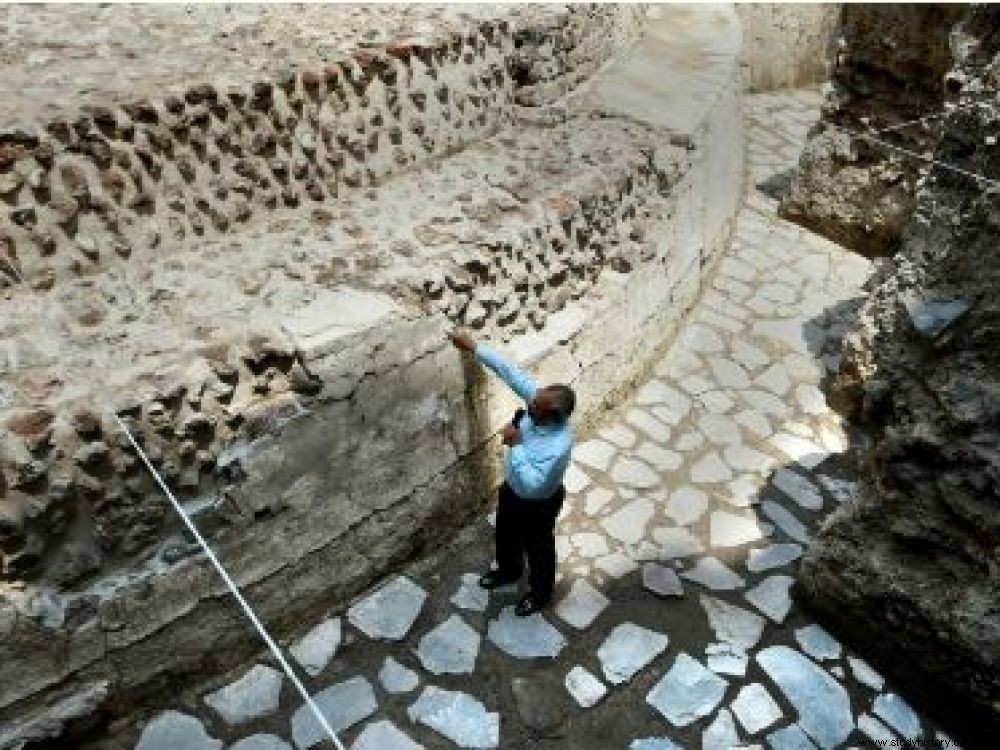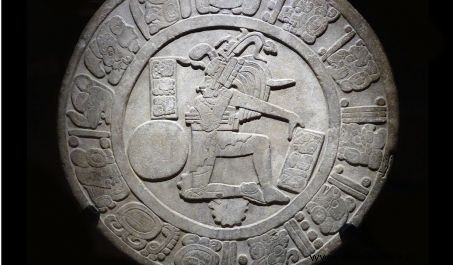A circular temple and the remains of an Aztec ceremonial ball court have just been unearthed in the Mexican capital.

A Mexican archaeologist comments on the recent discovery of a circular temple in central Mexico City.
The foundations of an ancient Aztec temple as well as a portion of a ball court or ceremonial pelota court were discovered in the historic center of Mexico City, as revealed on Wednesday June 7, 2017 by the Mexican authorities, during a press conference. Mexico City was indeed built on the ruins of Tenochtitlan, the ancient capital of the Aztecs or Mexica. It is therefore not uncommon, during earthworks, to see ancient monuments emerge, like those recently cleared behind the imposing colonial cathedral. The one that dominates the Zocalo square, the immense central esplanade of the city. Dedicated to the wind god Ehecatl , one of the primordial deities of the Aztec pantheon, the circular stucco temple erected at the end of the 15th th century, of which only the lower levels have been found, had at the time of its splendor, a summit in the shape of a coiled serpent, recalled Eduardo Matos, archaeologist at the National Institute of History and Anthropology of Mexico (INAH).
According to specialists, it was at the very location of these exhumed remains that in 1528, Hernan Cortez, the Spanish conqueror, would have attended the Aztec ritual game for the first time, at the invitation of the last emperor, Moctezuma. A spectacular game with rules that could make people shudder, since on certain occasions they led to human sacrifices!
 Pelota player from the Maya-Aztec area, represented on a stele dating from 600-900 CE. Credits:Ann Ronan Picture Library /Photo 12/ AFP
Pelota player from the Maya-Aztec area, represented on a stele dating from 600-900 CE. Credits:Ann Ronan Picture Library /Photo 12/ AFP
Appeared around 1500 BC, this game which opposed two teams and was played using a rubber ball of variable size (up to 3kg!), took place on a ground with an H structure, the tlachtli . More than a thousand have been discovered to date throughout the Maya-Aztec area. Some Codex (manuscripts) and Spanish chronicles tell how players used their hips, elbows or forearms to keep the ball in play, while avoiding touching it with their feet or hands. Knuckle protectors and padded jackets mitigated the impact of the bullets. The goal was to return the ball to the opposing side without it touching the ground. But everything took a more dramatic turn during religious ceremonies. Since the game of pelota was a way of ritually recreating the stages of creation in order to ensure the continuity of the cycle of life and death in the cosmos, the trajectory of the ball which corresponded to the course of the sun was never to be 'Stop. But when this moment occurs, beware of the defeated team… These celebrations indeed ended with the beheading of the losers. Their heads landed on the terrifying tzompantli , skull racks. What must have happened to the owners of the 32 cervical vertebrae unearthed near the playground, if we are to believe Inah archaeologist Raul Barrera...
Only part of the structure, a staircase and a portion of the stands are still visible. Archaeologists estimate that the original land was 50 meters long. The pelota game is still practiced in a soft version, under the name of ulama .
The circular temple is said to have been built during the reign of Emperor Ahuitzol (1486-1502), Moctezuma's predecessor. The set was 34 meters long and 4 meters high. These are the last remains unearthed in the historic center of Mexico City, on the site of the Templo Mayor (Great Temple), one of the most studied places in the capital. "This discovery offers a new opportunity to immerse ourselves in the splendor of the pre-Hispanic city of Tenochtitlan “, said the Minister of Culture Maria Cristina Garcia. A hotel stood just above the site but it collapsed in 1985 during the devastating earthquake which struck the Mexican capital killing thousands. The hotel owners then discovered these Aztec elements and notified the National Institute of Anthropology and History.Mexican archaeologists believe that this temple was built between 1486 and 1502.
(with AFP)
